Hyperliquid Explained: Perps DEX, HyperEVM & HYPE Token

Summary: Hyperliquid is a decentralized exchange and Layer 1 blockchain powered by the HYPE token, featuring perpetuals, spot markets, and smart contract support through its HyperEVM.
It offers up to 40x leverage, supports over 100 assets, and processes more than $300 billion in monthly volume with competitive maker-taker fees between 0.024% and 0.045%.
Hyperliquid, the largest DEX with 760,000+ users, delivers CEX-level speed, gas-free trading, and Ethereum interoperability on its custom L1 blockchain powered by $HYPE.
Daily Traded Volume
Over $10 Billion
Supported Assets
BTC, ETH, SOL, SUI + 100 more
Key Features
DEX, HyperEVM L1 and Vaults
What is Hyperliquid?
Hyperliquid iis the largest perpetual decentralized exchange, processing over $300 billion in monthly volume with unmatched speed and liquidity. It operates on a custom Layer 1 blockchain designed from first principles to deliver institutional-grade performance in a decentralized trading environment.
Built around its proprietary HyperBFT consensus, Hyperliquid achieves one-block finality and supports over 200,000 onchain orders per second. This architecture allows perpetual futures trading to remain entirely transparent, verifiable, and secure, eliminating the opacity common to centralized exchanges.
Unlike centralized exchanges, Hyperliquid is fully community-owned, with no paid market makers, listing fees, or corporate intermediaries. Every trade, asset listing, and governance decision happens permissionlessly, reinforcing Hyperliquid’s mission to power a fully decentralized financial system.
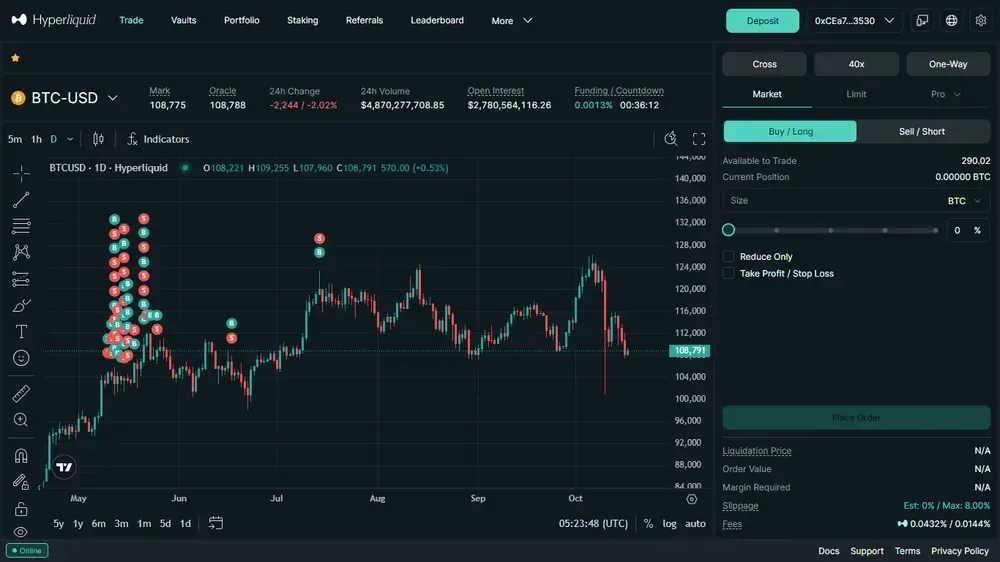
How Does Hyperliquid Work?
Hyperliquid operates as a vertically integrated blockchain system combining trading, execution, and settlement entirely onchain for maximum transparency and performance. Each component, from its perpetual DEX to HyperEVM, contributes to a unified, high-throughput financial environment.
1. Hyperliquid Perpetual DEX
Hyperliquid’s perpetual DEX supports trading for over 100 assets, with community-driven listings and no centralized approval process or listing fees. Traders access up to 40x leverage, with risk parameters and maintenance margins transparently enforced onchain across all positions.
Each perpetual contract is USDC-margined and USDT-denominated, offering consistent pricing without cross-currency conversion distortions. Hourly funding payments maintain peg stability between the perpetual contract and the underlying spot price, mirroring institutional-grade pricing mechanisms.
The fully onchain order book provides deep liquidity and high execution reliability using price-time priority matching similar to centralized exchanges. Supported order types include market, limit, TWAP, stop-loss, and take-profit, allowing traders to deploy automated or hedging strategies directly from the DEX.
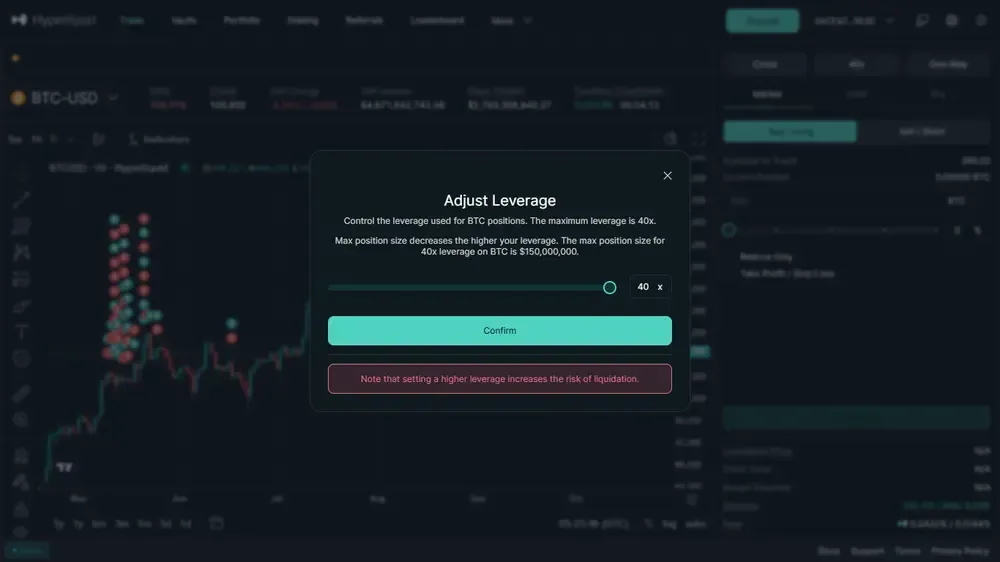
2. HyperCore
HyperCore is the execution engine of Hyperliquid, built to handle order matching, margining, and liquidation with one-block finality. It uses HyperBFT, a custom consensus algorithm achieving median 0.2-second latency and sub-second confirmation for 99% of trades.
By eliminating offchain intermediaries, HyperCore ensures every order, cancelation, and liquidation is recorded onchain in deterministic order. This structure enables transparent market operations where users can audit all activities in real time through the blockchain state.
HyperCore also integrates permissionless vaults and native multi-sig support to improve trading strategies and account security. Vaults such as the Hyperliquidity Provider (HLP) allow the community to earn profits from market making and liquidations that are traditionally reserved for insiders.
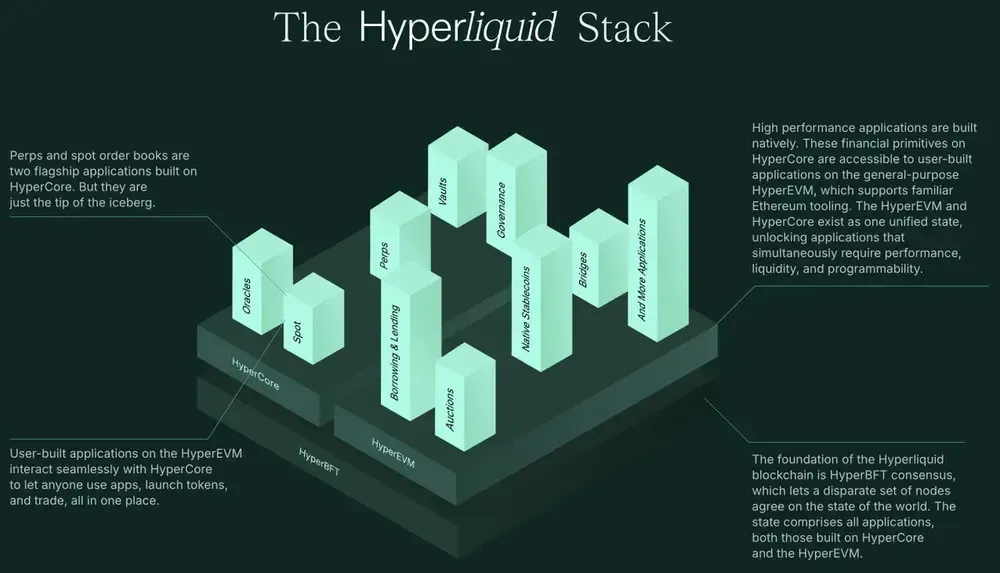
3. HyperEVM
The HyperEVM extends Hyperliquid into a smart contract platform secured by the same HyperBFT consensus as HyperCore. This integration enables developers to build decentralized applications that natively interact with Hyperliquid’s deep onchain order books and liquidity layers.
Builders can deploy ERC-20 contracts and connect them directly with HyperCore spot pairs for instant market access and price discovery. This permissionless design removes gatekeeping and allows projects to launch tokens, build protocols, and list assets seamlessly without external approval.
Several projects already utilize HyperEVM, including Okto and Felix Protocol, highlighting its growing DeFi ecosystem. Through this unified architecture, HyperEVM bridges programmable smart contracts with performant trading infrastructure, representing an advancement unmatched by any other blockchain today.
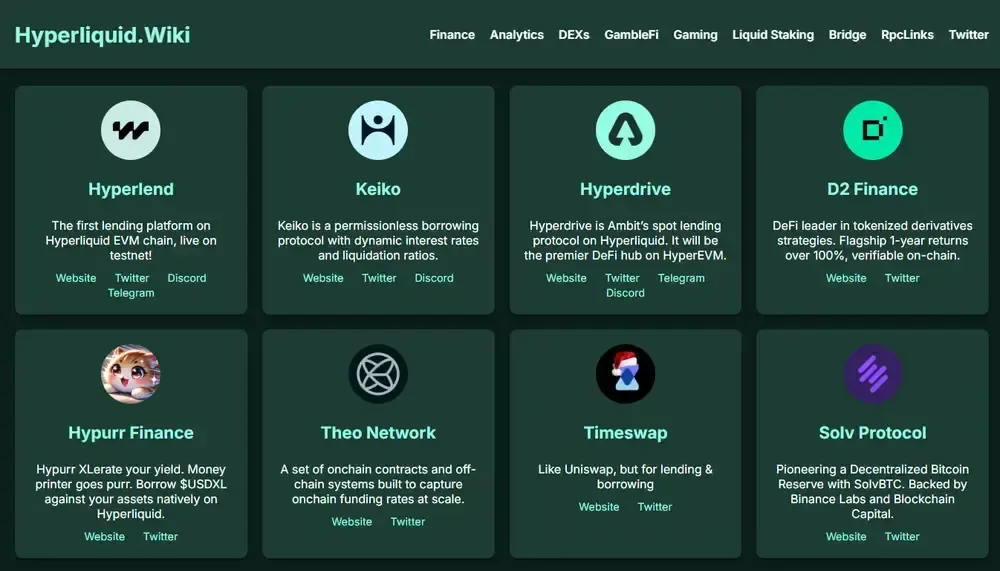
4. Hyperliquid Improvement Proposals (HIPs)
The HIP framework governs Hyperliquid’s onchain evolution through transparent and upgradeable standards. Each proposal introduces protocol-level innovations ranging from native token design to decentralized perpetual deployment and automated liquidity mechanisms.
HIP-1 defines a fungible token standard supporting spot order books between HIP-1 tokens, while HIP-2 introduces “Hyperliquidity,” an automated, order book-native liquidity strategy. HIP-3 extends decentralization further by enabling permissionless perpetual markets deployed by independent builders who stake 500,000 HYPE to maintain market integrity.
These standards ensure continuous expansion of Hyperliquid’s financial primitives while preserving neutrality and fairness. Through HIPs, the ecosystem evolves collaboratively, balancing performance, transparency, and decentralized governance.
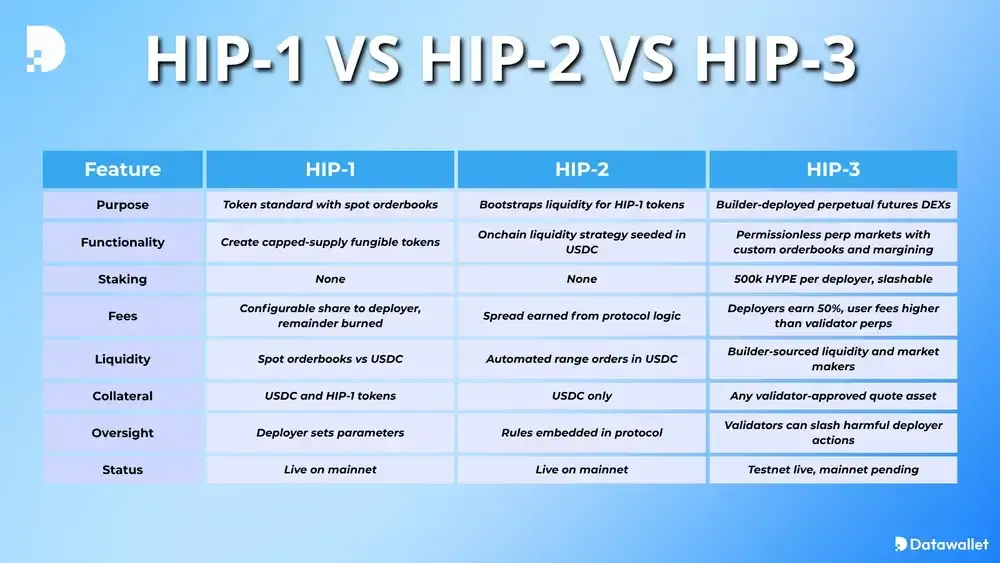
5. Validators and Delegators
Hyperliquid’s security and consensus are maintained by a network of 24 top-staked validators running the HyperBFT protocol. Validators are responsible for block production, oracle price updates, and bridge signatures, ensuring fast and tamper-proof state updates across the chain.
The Delegation Program strengthens decentralization by allowing HYPE holders to delegate stake to reliable validators that maintain 95% uptime or higher. This model rewards operational excellence while promoting a diverse and globally distributed validator set.
Each validator’s reputation and operational performance determine its share of delegated stake and continued participation in consensus. This structure creates a transparent and merit-based security model that aligns incentives between validators, delegators, and network stability.
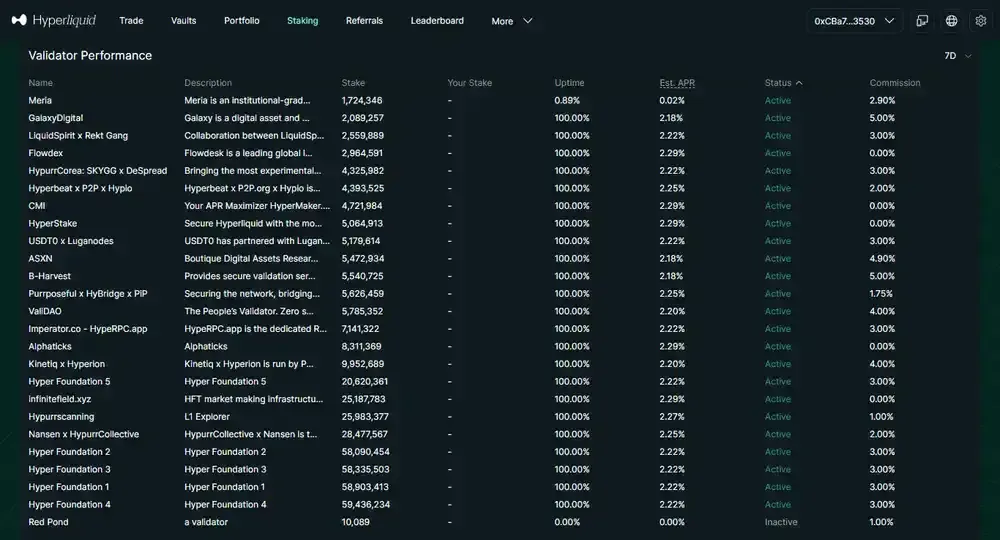
How to Trade on Hyperliquid
Our team has traded on Hyperliquid for more than two years, using it regularly across different market conditions. The steps below explain how to start trading on the platform:
- Set up a wallet: Install an EVM wallet such as MetaMask, Rabby, or Coinbase Wallet, and securely store your recovery phrase offline before depositing funds.
- Connect to Hyperliquid: Visit Hyperliquid, click “Connect,” and log in with your wallet or email to automatically generate a verified onchain trading account.
- Enable trading access: Click “Enable Trading” and approve the gasless wallet signature to activate permissions, unlocking live trading and account management features.
- Deposit collateral: Add USDC from Arbitrum or supported assets like BTC, ETH, or SOL; the Hyperliquid bridge detects the correct network and provides the address.
- Convert to USDC if needed: Use the onchain spot market to convert other tokens into USDC, with trades executed instantly at transparent, live market prices.
- Select a market: Choose from more than 100 perpetual pairs, including BTC, ETH, and meme coins, then decide whether to open a long or short position.
- Set leverage and position size: Adjust leverage between 3x and 40x, reviewing margin requirements, liquidation thresholds, and expected funding impact before placing an order.
- Execute and manage trades: Confirm your order, then monitor open positions, funding rates, and realized PnL through the unified, real-time trading dashboard.
We rank Hyperliquid’s trading flow responsive and transparent, with clear risk metrics and minimal friction between steps. Withdrawals to Arbitrum cost a flat $1 fee, and wallet pairing via QR code allows synchronized access between desktop and mobile without compromising security.
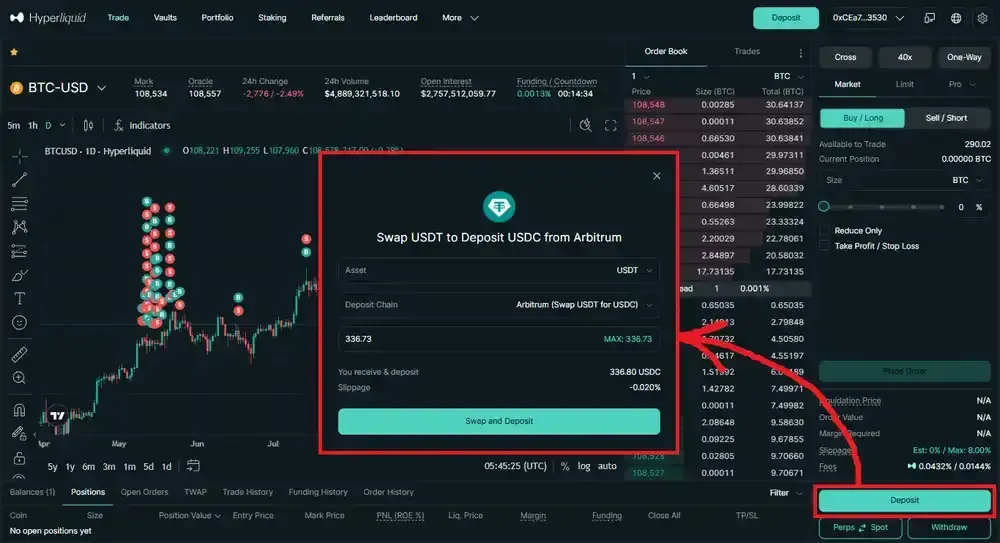
Hyperliquid Auto-Deleveraging (ADL) Explained
Auto-deleveraging (ADL) is Hyperliquid’s final solvency safeguard, ensuring that the exchange never carries bad debt or socializes user losses. When a trader’s account equity turns negative and liquidations cannot clear, the system automatically offsets profitable counterparties to restore balance.
ADL ranks positions on the winning side using a combined index of unrealized profit, leverage, and notional size to determine reduction priority. Highly leveraged and most profitable traders are partially closed first, with settlements executed at the previous mark price against the bankrupt position.
Recent market turmoil reignited discussion around ADL after $19B in liquidations triggered forced reductions across crypto exchanges, including Hyperliquid. The mechanism functioned correctly, yet it unsettled many traders, including Andrew Tate, who were unaccustomed to profitable positions being abruptly reduced.
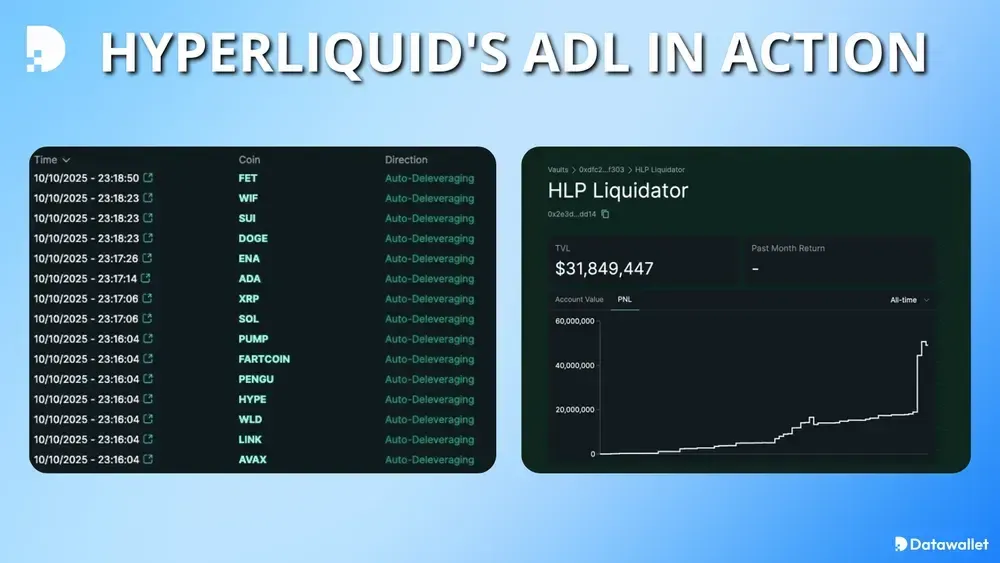
Hyperliquid Trading Fees and Funding
Hyperliquid uses a transparent, volume-based fee model and peer-to-peer funding mechanism that align incentives between traders and liquidity providers. Fees, rebates, and funding payments are calculated entirely onchain, ensuring accuracy and verifiability across every perpetual and spot market.
Perpetual Fee Structure
Perpetual trading fees adjust according to your rolling 14-day weighted volume across all markets. Spot volume counts double toward the overall tier calculation.
Key details on how Hyperliquid's perpetual trading fees scale:
- Fee tiers: Traders move from Wood to Diamond levels, with taker fees declining from 0.045% to 0.024% and maker rebates improving.
- Volume weighting: Combined perps and spot volume determine your tier, incentivizing balanced activity across Hyperliquid’s unified liquidity system.
- Maker rebates: Continuous on-trade rebates are credited directly to wallets, rewarding users who add limit liquidity and tighten market spreads.
- Aligned assets: Quote assets meeting liquidity and stability criteria earn 20% lower taker fees and 50% better maker rebates.
- HIP-3 inclusion: Builder-deployed perps use the same fee ladder, maintaining consistent economics across the entire Hyperliquid ecosystem.
Spot Trading Fees
Hyperliquid's spot pairs fees share the same tier system as perpetuals but apply higher base rates due to deeper liquidity and direct asset settlement.
The main factors shaping spot trading costs and incentives:
- Base rates: Taker fees start at 0.07% and drop to 0.025% for Diamond-tier accounts exceeding $7 billion in rolling volume.
- Double weighting: Spot volume counts twice toward fee tiers, allowing active spot traders to climb tiers faster and unlock deeper discounts.
- Reduced pair fees: Trades between two quote assets enjoy 80% lower taker fees and corresponding reductions in maker rebate margins.
- Revenue sharing: Spot token deployers can retain up to 50% of trading fees from their pairs, creating community-driven liquidity incentives.
HYPE Staking Discounts
Staking HYPE reduces trading fee costs and strengthens network security. Discounts scale with stake size and compound with volume-based tiers.
Here is how Hyperliquid staking affects fees and rewards:
- Tiered rewards: Staking 10 to 500,000 HYPE grants 5%-40% additional discounts on trading fees across all supported markets.
- Linked staking: A staking user can link to a trading account, but this grants control permissions and cannot be reversed.
- Community distribution: All collected fees are directed to community vaults, the assistance fund, and spot deployers rather than centralized entities.
Funding Mechanism
Funding on Hyperliquid keeps perpetual prices anchored to their spot counterparts through hourly payments between longs and shorts. Rates adjust dynamically based on the price premium.
Details on how funding keeps perpetual prices aligned:
- Funding frequency: Payments occur every hour, calculated from eight-hour averages using oracle-based price differences between perps and spot.
- Interest baseline: A fixed 0.01% rate every eight hours (≈11.6% APR) compensates shorts for dollar-denominated borrowing costs.
- Premium component: When perp prices exceed spot, longs pay shorts; when below, shorts pay longs, maintaining market equilibrium.
- Formula design: Funding Rate = Premium Index + clamp(interest rate - premium index, -0.0005, 0.0005) applied per interval.
- Caps and safety: Rates are capped at 4% per hour, limiting distortions while allowing price alignment during extreme volatility.
HYPE Tokenomics
HYPE is the native token of Hyperliquid, securing the HyperBFT consensus and powering both the HyperEVM and trading ecosystem. The total supply is capped at 1 billion tokens, distributed entirely onchain with a majority directed to the community.
Below is a breakdown of the HYPE token allocation:
- Future emissions and community rewards: 38.888% allocated to ongoing incentives and future programs supporting liquidity, governance, and ecosystem growth.
- Genesis distribution: 31.0% distributed to eligible early participants at launch, fully unlocked and transferable immediately upon the genesis event.
- Core contributors: 23.8% reserved for current and future builders, vesting gradually from 2027 through 2028 to align long-term incentives.
- Hyper Foundation budget: 6.0% directed to operational funding, ecosystem partnerships, and grants that accelerate protocol development.
- Community grants: 0.3% earmarked for direct community initiatives and builder rewards, reinforcing Hyperliquid’s open, user-driven model.
- HIP-2 Hyperliquidity pool: 0.012% allocated to seed onchain liquidity, ensuring smooth market function at network launch.
Hyperliquid’s price typically trades between $35 and $45, down from its all-time high of $59.37, as the market consolidates after massive ecosystem expansion. With a circulating supply of 337 million tokens, its market capitalization stands near $12.55 billion, and the fully diluted valuation approaches $37.29 billion.
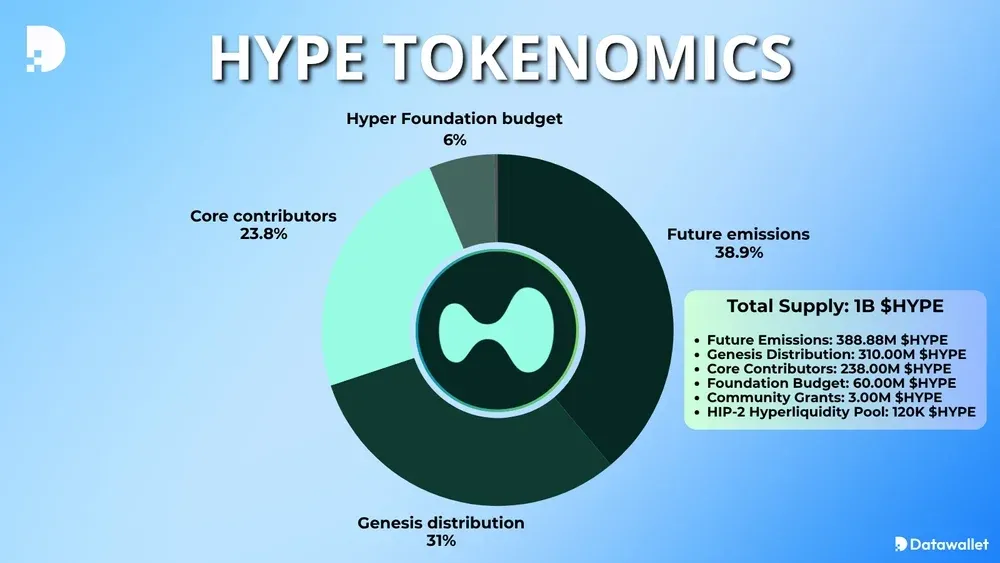
Hyperliquid Airdrop
Hyperliquid’s first airdrop in late 2024 became one of the largest in crypto history, distributing 31% of the total HYPE supply. Around 310 million tokens were allocated to early traders and liquidity providers on HyperCore, rewarding consistent activity before the HyperEVM mainnet launched.
While the team has not officially confirmed a Season 2 airdrop, the community interprets ongoing emissions as part of an active rewards phase. Users farm points through protocols like HypurrFi, HyperLend, and HyperSwap, staking HYPE into derivatives such as stHYPE or LHYPE to maximize multipliers.
In parallel, Hyperliquid launched the Hypurr NFT collection: 4,600 commemorative tokens airdropped to early network supporters and contributors. The collection debuted with a $69,000 floor and over $45 million in volume, underscoring sustained demand for Hyperliquid’s ecosystem rewards.
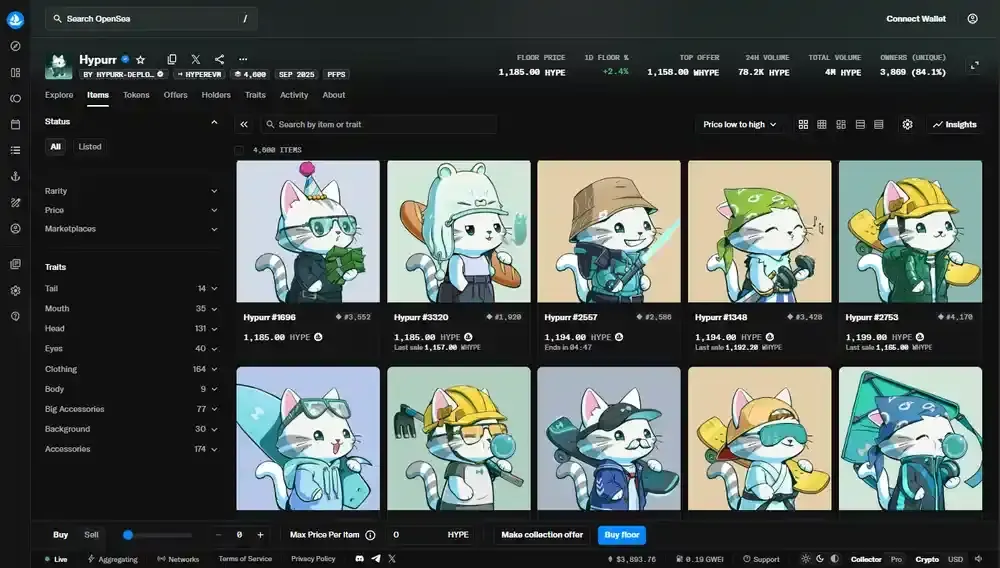
Is Hyperliquid Safe?
Yes, Hyperliquid is considered technically secure, featuring audited contracts, transparent onchain settlement, and consistent uptime during high market volatility. The Hyperliquid L1 infrastructure and bridge were reviewed twice by Zellic, which found no critical vulnerabilities in consensus or validator operations.
In early 2025, the JELLY exploit revealed weaknesses in liquidation logic, resulting in approximately four million dollars in vault-related losses. Developers implemented immediate patches and adjusted margin parameters, improving liquidation handling and strengthening onchain solvency protections.
Although user balances remained intact, the event exposed governance centralization through the Foundation’s unilateral intervention. With around 24 active validators, critics argue the network still relies on a narrow operational base that limits decentralization.
During the $19 billion liquidation market crash in October 2025, Hyperliquid maintained uninterrupted 100% uptime and confirmed finality across all markets. The platform is viewed as technically secure, but long-term safety depends on validator expansion, recurring audits, and transparent governance practices.
Hyperliquid Founder
The founder of Hyperliquid is Jeff Yan, a Harvard-trained computer scientist and former high-frequency trading engineer at Hudson River Trading. He launched Hyperliquid in 2023 to create a decentralized trading system combining speed, transparency, and institutional-level execution.
Furthermore, the Hyperliquid team includes Jeff’s Harvard classmate iliensinc and engineers from MIT and Caltech with experience at Citadel, Airtable, and Nuro. Fully self-funded and venture-free, the team’s independence allows rapid development and strong community alignment.
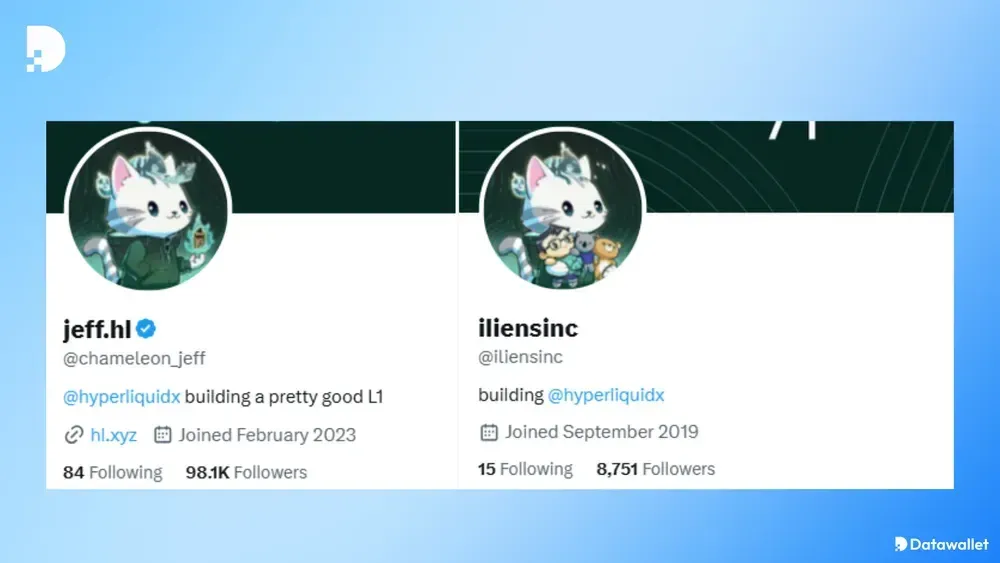
Final Thoughts
Hyperliquid defines this cycle’s shift toward truly onchain trading, earning admiration for its precision, transparency, and scale unmatched in decentralized finance.
Its unusually generous airdrops and revenue-sharing model turned regular traders into invested partners, reinforcing genuine alignment between users and protocol growth.
Earning over $1 billion in annualized revenue, Hyperliquid now sits on the frontier of DeFi, with HyperEVM expected to extend that lead through hundreds of new dApps in the upcoming years.
Frequently asked questions
Does Hyperliquid require KYC?
No, Hyperliquid does not require KYC for trading, allowing users to connect a wallet or email and begin instantly. However, validator applicants in the Delegation Program must complete verification checks as part of protocol governance requirements.
Where can I buy Hyperliquid / HYPE token?
HYPE is available on major centralized exchanges such as Bybit, Bitget, Gate.io, and KuCoin, as well as through select decentralized exchanges. After purchase, tokens can be bridged to the Hyperliquid network for staking, trading, or use within HyperEVM applications.
What is the Hyperliquid explorer?
Hyperliquid offers several explorers for different purposes: the official Block Explorer at app.hyperliquid.xyz/explorer, HypurrScan for transaction and token data, and HyperDash for real-time trading analytics and market metrics.
What chain is Hyperliquid on?
Hyperliquid operates as its own Layer 1 blockchain powered by HyperBFT, combining HyperCore for trading and HyperEVM for smart contracts. The native HYPE token is used for gas, staking, and governance across both layers of the network.
Does Hyperliquid have a testnet?
Yes, Hyperliquid offers a public testnet that mirrors mainnet functionality for trading and smart contract deployment, supported by an official Python SDK for automated testing and data integration.
.webp)
Written by
Jed Barker
Editor-in-Chief
Jed, a digital asset analyst since 2015, founded Datawallet to simplify crypto and decentralized finance. His background includes research roles in leading publications and a venture firm, reflecting his commitment to making complex financial concepts accessible.

.webp)
%2520(1).webp)

.webp)




